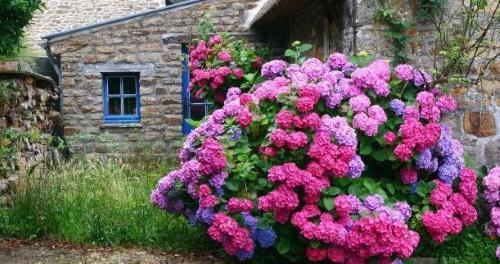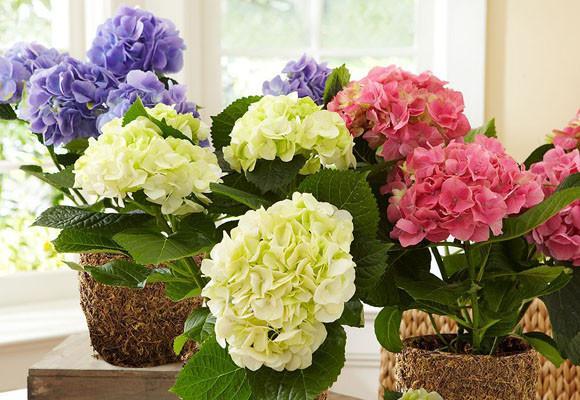How to care for hydrangea: features of growing a garden and indoor plant
 Hydrangea beauties conquered flower growers with their gorgeous appearance during flowering. Rounded bushes with emerald foliage on reddish shoots are quite spectacular in themselves. But when huge flower caps begin to bloom at their tops, it's just a stunning sight. To admire them every year, it is important to know how to care for a hydrangea. An unsuitable planting site or lack of moisture can not only worsen the quality of flowering, but also slow down the development of the bush itself.
Hydrangea beauties conquered flower growers with their gorgeous appearance during flowering. Rounded bushes with emerald foliage on reddish shoots are quite spectacular in themselves. But when huge flower caps begin to bloom at their tops, it's just a stunning sight. To admire them every year, it is important to know how to care for a hydrangea. An unsuitable planting site or lack of moisture can not only worsen the quality of flowering, but also slow down the development of the bush itself.
By its nature, hydrangea is a garden plant grown outdoors. However, to date, breeders have bred many compact varieties for indoor floriculture. Depending on where the hydrangea grows, there are some nuances of caring for it.
What does a garden hydrangea need?

Hydrangea loves nutritious and loose soil. It is necessary to add humus, a little sand and peat to the planting pit, mixing them with deciduous soil. In such a soil, the flower will actively develop.
The acidic soils of hydrangea are contraindicated. Moreover, the increased acidity can change the color of the buds, especially white-flowered ones, giving them a pink tint.
Garden hydrangea care consists of the following procedures:
- Mulching the trunk circle of a bush. This will protect the plant from weeds and prevent moisture from evaporating quickly.
- Frequent (weekly) watering - hydrangea loves water.
- Top dressing of the bush at least 4 times per season. The first time - in early spring with a complex of nitrogen-potassium-phosphorus preparations. The second top dressing in the form of potassium-phosphorus fertilizer is applied when the buds are forming. In the middle of summer, the hydrangea is fertilized for the third time with organic matter (mullein solution). The last fertilization is carried out in August, also organic.
- Pruning of faded inflorescences in late summer.
- Spring formative pruning. All weak and diseased branches are cut out. Old branches are also removed, leaving about a dozen strong healthy trunks per bush.
- Shelter of young bushes for the winter. Large-leaved and paniculate hydrangeas need shelter even in adulthood.
To avoid diseases with abundant watering, you can add a couple of manganese crystals to the water.
How to care for a potted hydrangea?
 Potted hydrangea also loves attention and care. In general, her growing requirements are the same as those of a garden shrub. The soil should be fresh, loose and nutritious. You can use a substrate for azaleas - it contains all the necessary components.
Potted hydrangea also loves attention and care. In general, her growing requirements are the same as those of a garden shrub. The soil should be fresh, loose and nutritious. You can use a substrate for azaleas - it contains all the necessary components.
For a flower you need to find the brightest place in the house. The south side is perfect for these purposes, but you need to put the flowerpot not on the windowsill, but on a stand next to the window.The optimum temperature for growing a plant is about 20 degrees Celsius.
To indoor hydrangea bloomed annually, she should provide a cool winter (no more than 10 ° C heat).
Watering the bush depends on the growing season and the season. In the spring, when the hydrangea is growing and forming buds, water should be moderately but regularly. In the summer, more moisture will be required, but during the dormant period, it is enough to moisten the soil in the pot once a week. In spring and during flowering, the plant needs fertilizing with mineral complexes. With the onset of autumn, all feeding stops.
After the end of flowering, the indoor hydrangea must be cut off. To do this, the old branches must be shortened in half, and the weak and crooked ones must be cut completely. The second haircut is carried out in the spring - at this time, too long branches are shortened to give the bush a magnificent shape.